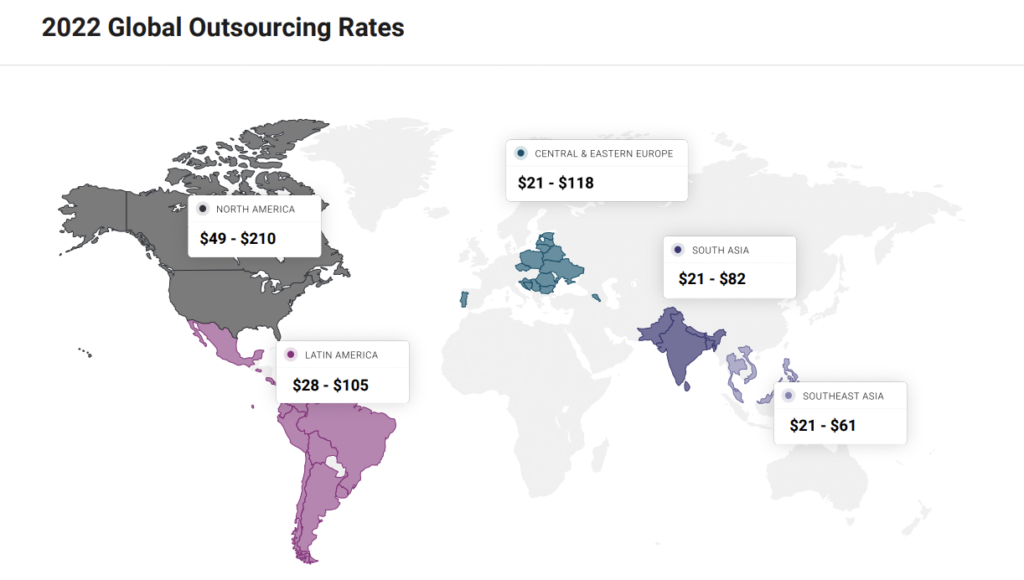A few weeks ago I saw this comment on a LinkedIn post:
“If you’re coming up with a price resulting from a spreadsheet, you’re doing it wrong. A spreadsheet should not dictate your price”.
The assumption of the person who commented was that for software services the price should be set by a person, not a spreadsheet.
I would say this is debatable.
I don’t agree with his premise and here is why.
What is the norm
I am picturing the following:
- Your company has a set list of prices. Most in the industry call it the rate card
- This is calculated by the owner or one of the managers and discussed within a small team
- It’s reviewed once a year, sometimes even less often
- The rate card is a list of roles, skills, seniority levels, prices (rates) for each of them, typically expressed as an hourly rate
- It might also list the types of projects or contracts that you are working with
When you talk to a potential customer, you calculate and communicate your pricing using this rate card.
Sometimes you might feel the need to give a discount from the list prices.
No spreadsheet
In this scenario, the price set for any project is a subjective decision of the person or persons creating the financial proposal.
In which case, the commenter was right. The price is not set by a spreadsheet.
What will influence the price?
If the price is set by a person, there are a number of factors that we know will have an influence:
- Individual personality profile
- Past experience and attitude towards money and financial topics
- Decision making biases (anchoring, confirmation bias, loss aversion, availability heuristic and many others)
- The emotional state of the people, in the moment they make the calculation
- Time pressure, lack of discipline or disorganisation in managing tasks
- Noise in decision making: the high variability in inputs and how different people process them to reach conclusions and take actions
There are also a significant number of variables and attributes that are specific to the project:
- Size and company type of the potential customer
- Their industry and geographic location
- The role, negotiation style and background of the main buyer
- Whether you are talking with just one buyer or there is a committee involved
- Competition on the project
- Level of quality that you can deliver
- Current level of direct costs, overheads and cost to sell
- A forecast of what will happen with the costs in the future
- Margins you are looking to achieve, linked to the risks you are taking on the project
Anyone setting the price would have to keep track of all these in their head.
Give me a spreadsheet
If the spreadsheet is a fixed list of prices that is recalculated once per year, it is not enough. A person should set the price. But this is not optimum.
What is optimum is to integrate as many variables and attributes as possible in the spreadsheet.
This way, every time you set a price, you have a much higher chance of finding the optimum price: not so high that you will lose the project, but also not so low that you regret winning the project.
WHAT THIS MEANS FOR YOU
Please use a spreadsheet.
A spreadsheet should always dictate your price.
Make that spreadsheet as complicated as you can.
Review it often.

Source:

